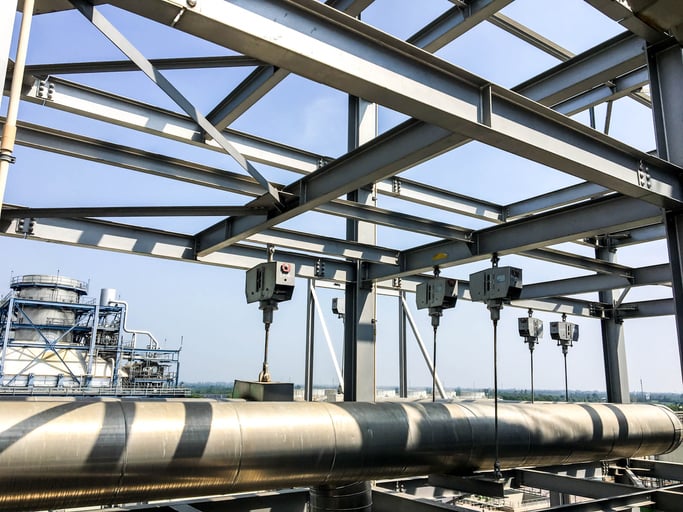
When it comes to pipe supports, materials matter. They can be the difference between a longer-lasting system and on-site disasters. But when your vendor starts pitching you on a new product’s features, it’s easy to forget about a pipe support’s most important quality: what it’s made of.
We’re here to clear up the confusion. We’ve laid out how composite pipe supports and metallic pipe supports stack up. Read on for the differences between these two types of pipe supports and how each of their materials should be used.
What Is a Composite Pipe Support?
By design, composite material is complex, and so it can naturally be misunderstood. Because it’s not made of metal, people who aren’t familiar with the material sometimes assume it’s weak. But it’s actually extremely durable.
This is because composite material pairs materials with different physical and chemical properties. The result is a completely new product with a fresh set of characteristics and advantages. This hybrid material is designed to bring out the advantages of each individual ingredient.
Examples of Composite Supports
The most common type of composite pipe support is the pipe shoe. Pipe shoes elevate pipes, insulate pipes, and prevent corrosive metal-on-metal contact. However, composite pipe shoes like the CryoTek Pipe Shoe provide special advantages that their metal counterparts don’t. In addition to being able to withstand temperatures of up to 400 degrees F, they can also work in environments as cold as -320 degrees F. That makes them ideal for cryogenic piping systems.
They also stop heat transfer. That means that when the temperature of your pipes drop, composite material prevents ice formation. This gives them a strong advantage over metal pipe shoes, which allow ice to form and systems to break down.
Benefits of Composite Supports
Composite pipe supports are usually made up of a blend of materials that ends up looking like a thick plastic. And like plastic, it’s flexible. In pipe supports, this material is especially advantageous for products that need to hold a tremendous amount of weight, such as pipe shoes. This is because composite pipe supports can also hold up under heavy pipes.
Disadvantages of Composite Supports
Overall, composite is the go-to material for pipe shoes. However, it isn’t necessarily ideal for other types of more rigid pipe supports. For instance, pipe restraints, such as clamps or bolts, benefit from materials with less give because they need to hold pipes in place.
What Is a Metallic Pipe Support?
Chances are that most pipe supports you come across will be made of metal or metal alloys. Alloys like stainless steel can protect against corrosion and be extremely strong at the same time. However, unlike composite pipe supports, metallic pipe supports take their strength from their ability to stand firm rather than their flexibility.
Examples of Metallic Pipe Supports
Common types of metallic pipe supports include restraints such as U-bolts, straps, and clamps. And metallic reinforcement helps products stand up to harsh environments. For instance, VibraTek Hold Down Clamps can redirect massive pipes, take on 20,000 pounds of pressure, and withstand temperatures as high as 750 degrees F when they’re unlined.
Benefits of Metallic Supports
Metallic pipe supports are solid and built to control piping. That’s why pipe restraints tend to be metallic. Pipe restraints restrict or redirect pipe movement, minimize wear, reduce corrosion, and stop pipes from crashing into other objects. Because they need to control heavy pipes and strong vibrations, a firm material like metal adds a durable form of support.
Disadvantages of Metallic Pipe Supports
At face value, metallic pipe supports seem durable. However, they are vulnerable to electric charges and metal-on-metal corrosion. To get the most out of metallic pipe supports, it’s a good idea to pair them with insulation, liners, and protective finishes that minimize galvanic corrosion.
Find Quality Pipe Supports
With this overview of the differences between pipe support materials, you should be ready to extend the life of your piping system. And we focus on supplying supports made from industry-proven materials. Go here to learn how different products can improve your piping systems.





